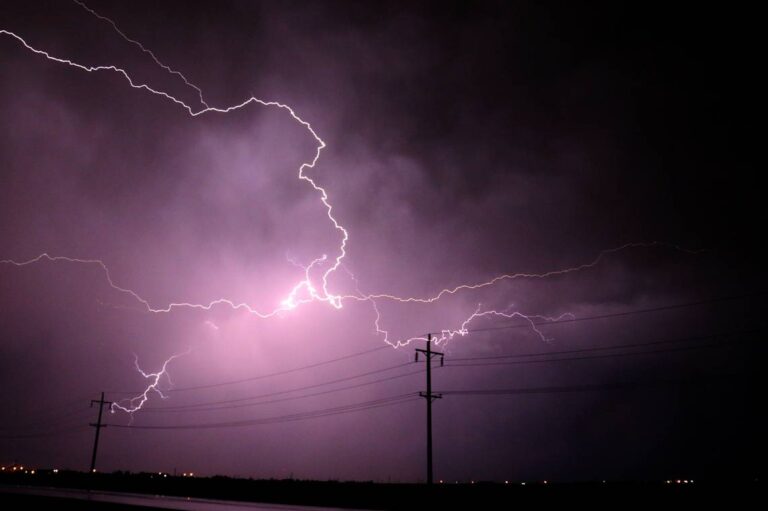A National Weather Service report issued Saturday at 2:05 p.m. warns residents of strong thunderstorms until 2:45 p.m.
Expect dime-sized hail (0.75 inches) and wind gusts up to 40 mph.
“At 2:05 p.m., Doppler radar detected a strong thunderstorm over Duncanville, moving eastward at 35 mph,” according to the NWS. “Gusts of wind could cause tree branches to fall and blow around unsecured objects. Minor damage to outdoor objects is possible.”
Locations affected by the alert include Dallas, Grand Prairie, Mesquite, Desoto, Cedar Hill, Duncanville, Lancaster, Balch Springs, Seagoville, Hutchins, Cockrell Hill, Sunnyvale, Wilmer, Combine, Cedar Hill State Park, Joe Pool Lake, Sand Branch and Lake of Mountain Creek. This includes the following highways: Interstate 35E between mileposts 413 and 426. Interstate 20 between mileposts 456 and 485. Interstate 30 between mileposts 35 and 44. Interstate 45 between mileposts 268 and 283.
The NWS states: “If you are outdoors, consider sheltering inside a building. »
This alert is in effect until 2:45 p.m.
What to do when the threat of lightning approaches?
Lightning strikes the United States approximately 25 million times per year. The majority of these strikes occur during the summer, causing about 20 deaths each year, according to the NWS. The likelihood of lightning increases as the storm gets closer and peaks when the storm is directly overhead. This risk decreases as the storm moves away.
Here are recommendations for maintaining safety during a thunderstorm:
• To reduce the risk of being struck by lightning, when you go out, make a plan to get to a safer place.
• If the sky becomes threatening and thunder is heard, find a safe place to take shelter.
• Once inside, avoid contact with landline telephones, electrical equipment, plumbing, and windows and doors.
• Wait 30 minutes after the last lightning or thunder before going out.
If finding indoor shelter is not an option:
• Avoid open fields, hilltops or ridge tops.
• Stay away from large, isolated trees or other large objects. If you are in a forest, stay near a lower stand of trees.
• If you are in a group, spread yourself out to avoid the current that circulates between the members of the group.
• If you are camping in an open area, set up camp in a valley, ravine, or other low-lying area. Remember that a tent offers no protection from lighting.
• Maintain a safe distance from water, wet objects and metal objects. Water and metal do not attract lightning, but they conduct electricity efficiently.
Tips for driving in rainy weather
• Turn on your headlights — Even when it’s bright outside, using your headlights can improve visibility and alert other drivers to your presence.
• While driving — Stay in the middle lanes and stay on high ground. Rainwater tends to accumulate on the sides of roads.
• Stay away from puddles – Driving through puddles or areas of light rainwater can cause vehicles to hydroplane or skid out of control.
• Do not follow large vehicles closely – Large vehicles like trucks or buses can create a spray of water that can reduce your visibility.
• Avoid flooded areas — When you encounter a flooded road, turn around and go back. Strong currents caused by flash floods can push drivers off the roads. Driving in deep water can also negatively affect a vehicle’s mechanical and electrical systems.
What is hydroplaning?
Hydroplaning occurs when a vehicle begins to slide uncontrollably on wet roads.
This happens when water in front of the tire accumulates faster than the weight of the vehicle can push the water away. The water pressure then causes the vehicle to rise and slide on a thin layer of water between the tires and the road, causing the driver to lose control. Hydroplaning is most often attributed to three factors:
1. Vehicle Speed — As a vehicle’s speed increases, tire grip and the ability to control the vehicle decreases. Drive at reduced speed in rainy weather.
2. Water Depth — The deeper the water, the sooner a vehicle loses traction on the road. No matter how deep the water is, even a thin layer can cause hydroplaning.
3. Tire Tread Depth — It’s important to check the tread on your tires before hitting the road, as weak or no tread can lead to slipping.
If your vehicle hydroplanes, here is what you need to know:
• Release the accelerator — Release the accelerator to slow the vehicle until the tires find traction.
• Steering on the skid — Steering on the skid can help the vehicle’s tires realign and regain control.
• Make sure the tires reconnect with the road — While skidding, wait for the tires to reconnect with the road, then gently straighten the wheels to regain control.
• Brake gently if necessary — Brake normally if the vehicle has anti-lock brakes and pump the brakes gently if it is an older vehicle.
Source: National Weather Service


